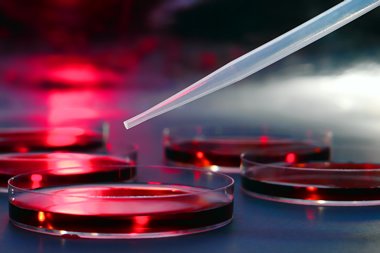What are Biofilms?
 A biofilm may sound like something you buy, perhaps to help in experiments with bacterial growth, but in reality the truth is somewhat different. A biofilm consists of a layer of microorganisms that adhere to one another. Together they form a protective layer that encapsulates colonies of bacteria inside the outer shell. Biofilms typically attach to hard surfaces and can be very difficult to remove once in place.
A biofilm may sound like something you buy, perhaps to help in experiments with bacterial growth, but in reality the truth is somewhat different. A biofilm consists of a layer of microorganisms that adhere to one another. Together they form a protective layer that encapsulates colonies of bacteria inside the outer shell. Biofilms typically attach to hard surfaces and can be very difficult to remove once in place.
Bacterial biofilm
The microorganisms are generally bacterial in nature. Indeed, you may hear this referred to as a bacterial biofilm. Basically, the bacteria stick together (literally) and to whatever surface they are found on. The formation of the biofilm helps to protect the bacteria inside. Commonplace examples of biofilm include plaque sticking to teeth, the slimy coating found on rocks in streams and rivers, or the bacteria and gunk forming inside a pipe draining away from your sink.
There are three things that must be present for a biofilm to occur. They are:
- Moisture – this allows the bacteria to grow and spread.
- Bacteria – this could mean one species of bacteria or several, depending on the location and what is present.
- A surface – something for the bacteria to adhere to.
Biofilms will stick to lots of surfaces ranging from skin to water, a rock to a pipe, and metal to plastic. You name it – there is a good chance a biofilm can form on it, when the right elements are in place for this to happen.
Can biofilms cause health hazards?
The management and control of biofilms is very important in all walks of life. They can cause health hazards as they help to protect colonies of bacteria from lots of different treatments that would otherwise kill the individual or free floating bacteria. The biofilm acts as a very effective “hide-out” for bacteria that can be very difficult to remove.
Will a biofilm eventually disperse and disappear?
No. Think about what would happen if you decided not to brush your teeth for a day. The dental plaque in your mouth would start to build up, and you’d feel it as a layer or coating on your teeth. If you got up the next day, the plaque would not have disappeared. In fact, over time, it is likely to get worse – unless you (or a dentist) does something to remove it.
Managing Pseudomonas and Legionella bacteria
This is the case in every situation where a biofilm has formed. In some situations, a biofilm can present us with a potential health hazard. A good example is a situation where Pseudomonas or Legionella bacteria contaminates and spreads in a water system. The bacteria may be on the surface of the water, inside water pipes or somewhere else in the water system. If susceptible individuals come into contact with the bacteria contaminating the water, they could potentially fall ill as a result. This is why it is so important to manage and control the presence of biofilms, and ideally prevent them from occurring in the first place.
In this example, proper management and monitoring of both Pseudomonas and Legionella bacteria will prevent situations where people may succumb to infections including Legionnaire’s disease as a result of coming into contact with the bacteria.
Professional legionella risk assessment, training, testing and risk management support services
To find out more about our professional Legionella risk assessment, training, testing and other Legionella risk management support services call us today on 0330 223 36 86 or get in touch here … contact us
London Office
Kemp House
152 City Road
London EC1V 2NX
United Kingdom
Tel: +44 (0) 203 637 47 48
Manchester Office
Warren Bruce Court
Warren Bruce Road
Manchester M17 ILB
United Kingdom
Tel: +44 (0) 161 877 0586
Further reading
For additional information about legionella and Legionnaires; disease … here


